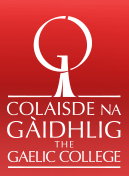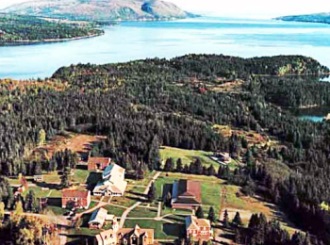To promote, preserve and perpetuate through studies in all related areas: the culture, music, language, arts, crafts, customs and traditions of immigrants from the highlands of Scotland.
– Mission Statement of the Cape Breton Gaelic College

The Cape Breton Gaelic College (Colaisde na Gàidhlig) is located in Englishtown, Nova Scotia on Cape Breton’s northeast coast. The Gaelic College was founded in 1938 by people from the local community who wanted to create a memorial for the Gaelic speaking pioneers of Cape Breton. That year, the Cape Breton Island Gaelic Foundation began the work of raising funds to establish the Gaelic College. The first building at the site on the Bay of St. Ann’s was a log cabin raised in 1939. Classes in the early years included Gaelic language, Gaelic grammar, Gaelic song, bag piping, and the history of Gaelic culture in Scotland, Nova Scotia and North America. Subjects such as folklore and highland dancing were soon added.
Today the Cape Breton Gaelic College is a modern and innovative institution. From its humble beginnings, this unique institution has expanded and gained an international reputation for its contribution to the preservation and development of the Scots Gaelic language and culture of Nova Scotia. The only institution of its kind in North America, students of all ages and ability travel here from around the world to study.

Colaisde na Gàidhlig / The Gaelic College has an international reputation for its contribution to the promotion and preservation of traditional Gaelic culture, offering instruction in over ten disciplines, and year-round learning and fun. As a cultural destination, it will delight visitors with the unique opportunity to experience first-hand the living culture of the Nova Scotia Gaelic people.
The College curriculum reflects the legacy of what was once a thriving Gaelic speaking Celtic nation. The curriculum includes a program in Gaelic Immersion and Gaelic language instruction in Gaelic drama, Gaelic song and Gaelic storytelling. Emphasis is also placed on Cape Breton’s rich musical heritage with courses in the Bodhran Celtic drum, Cape Breton Fiddling, Cape Breton Piano Accompaniment and the Celtic Harp.